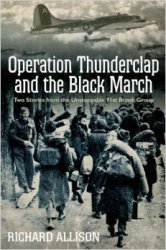An authoritarian regime, headed by Fulgencio Batista
(1901–1973) and closely tied economically to U.S. investors,
had ruled Cuba since 1934. A strong opposition
movement to Batista’s government developed, led by Fidel
Castro (b. 1926) and assisted by Ernesto “Ché” Guevara
(1928–1967), an Argentinian who believed that
revolutionary upheaval was necessary for change to occur.
Castro maintained that only armed force could overthrow
Batista, but when their initial assaults on Batista’s
regime brought little success, Castro’s forces, based in the
Sierra Maestra mountains, turned to guerrilla warfare. As
the rebels gained more support, Batista responded with
such brutality that he alienated his own supporters. The
dictator fled in December 1958, and Castro’s revolutionaries
seized Havana on January 1, 1959.
Relations between Cuba and the United States
quickly deteriorated. An agrarian reform law in May 1959
nationalized all landholdings over 1,000 acres. A new
level of antagonism arose early in 1960 when the Soviet
Union agreed to buy Cuban sugar and provide $100 million
in credits. On March 17, 1960, President Eisenhower
directed the Central Intelligence Agency (CIA) to “organize
the training of Cuban exiles, mainly in Guatemala,
against a possible future day when they might return
to their homeland.” 1 Arms from Eastern Europe
began to arrive in Cuba, the United States cut its purchases
of Cuban sugar, and the Cuban government nationalized
U.S. companies and banks. In October 1960,
the United States declared a trade embargo of Cuba, driving
Castro closer to the Soviet Union.
On January 3, 1961, the United States broke diplomatic
relations with Cuba. The new U.S. president, John
F. Kennedy, approved a plan originally drafted by the previous
administration to launch an invasion to overthrow
Castro’s government, but the landing of fourteen hundred
CIA-assisted Cubans in Cuba on April 17, 1961,
known as the Bay of Pigs, turned into a total military disaster.
This fiasco encouraged the Soviets to make an even
greater commitment to Cuban independence by attempting
to place nuclear missiles in the country, an act that
led to a showdown with the United States (see Chapter
7). As its part of the bargain to defuse the missile crisis,
the United States agreed not to invade Cuba.
But the missile crisis affected Cuba in another way as
well. Castro, who had urged Khrushchev to stand firm
even at the risk of nuclear war with the United States,
now realized that the Soviet Union was unreliable. If
revolutionary Cuba was to be secure and no longer encircled
by hostile states tied to U.S. interests, the Cubans
would have to instigate social revolution in the rest of
Latin America. He believed that once guerrilla wars were
launched, peasants would flock to the movement and
overthrow the old regimes. Guevara attempted to instigate
a guerrilla war in Bolivia but was caught and killed
by the Bolivian army in the fall of 1967. The Cuban strategy
had failed.
In Cuba, however, Castro’s socialist revolution proceeded,
with mixed results. The Cuban Revolution did
secure some social gains for its people, especially in
health care and education. The regime provided free
medical services for all citizens, and a new law code expanded
the rights of women. Illiteracy was wiped out by
creating new schools and establishing teacher-training
institutes that tripled the number of teachers within ten
years. Eschewing the path of rapid industrialization, Castro
encouraged agricultural diversification. But the Cuban
economy continued to rely on the production and
sale of sugar. Economic problems forced the Castro regime
to depend on Soviet subsidies and the purchase of
Cuban sugar by Soviet bloc countries.
The disintegration of the Soviet Union was a major
blow to Cuba, as the new government in Moscow no
longer had a reason to continue to subsidize the onetime
Soviet ally. During the 1990s, Castro began to introduce
limited market reforms and to allow the circulation of
U.S. dollars. But although most Cubans remained locked
in poverty, the regime refused to liberalize the political
system, and although limited Cuban contacts with the
United States were permitted by the Clinton administration,
the U.S. embargo remained in place as the new century
dawned.




 World History
World History









